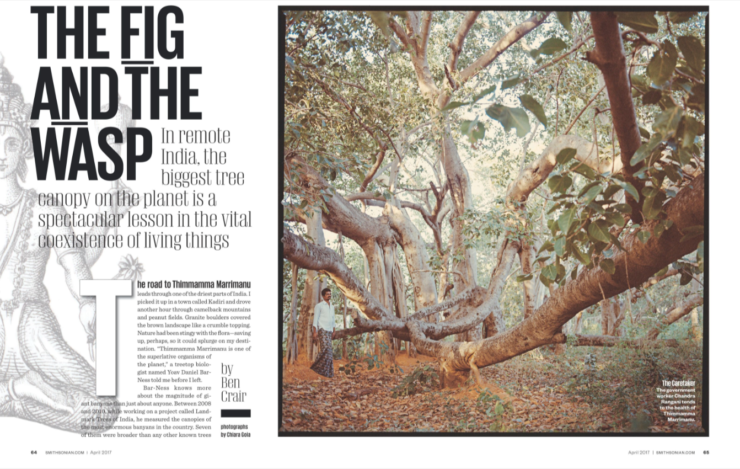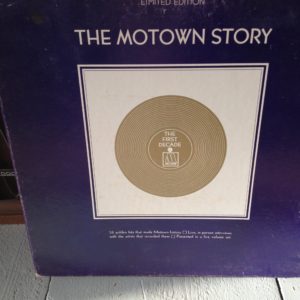
In this 1942 photo, a woman lifts up the hood of a truck.
We really looked under the hood of literary journalism this week, with wonderful tips on how to pitch and write your stories. In the second installment of our series “The Pitch,” a Smithsonian Magazine editor talks about her likes and pet peeves. In this week’s One Great Sentence, Poynter’s Roy Peter Clark shows why a sentence by Annie Dillard works so well. And in an amazing talk at the recent Power of Storytelling conference, Pulitzer winner Tom French knocked me out with his feat of storytelling about storytelling.

The finished spread in Smithsonian Magazine.
The Pitch: How to get the attention of a senior editor at Smithsonian Magazine. Contributor Katia Savchuk writes in her intro to this cool annotation of a real pitch that led to a published story: As a senior editor commissioning science features for Smithsonian Magazine, Jennie Rothenberg Gritz gets tons of freelance queries. Yet few cold pitches result in an article. Why not? “They’re often stories that should be told, but they’re not being framed as good stories, with good characters, narrative and a little twist that makes you surprised,” she says.
The soundtrack: “Give the People What They Want,” by the Kinks. Even later Kinks is pretty damn good. “Give the people what they want/You gotta give the people what they want/The more they get, the more they need/And every time they get harder and harder to please.”
One Great Sentence
“Before the aurora borealis appears, the sensitive needles of compasses all over the world are restless for hours, agitating on their pins in airplanes and ships, trembling in desk drawers, in attics, in boxes on shelves.”
Annie Dillard, “Pilgrim at Tinker Creek.” Read why we think it’s great.

The writer Tom French at the recent Power of Storytelling conference.
Tom French and “the three most beautiful words in the English language: What comes next?” French recently spoke at the annual Power of Storytelling conference in Bucharest, Romania. His speech was so powerful, we ran the entire transcript verbatim. Trust me: Read the whole thing. Here’s just one great line from it: “True stories worthy of our attention are all around us; they’re pumping inside of us, we breathe those stories. The real challenge is choosing, deciding among all the possibilities, what to write inside the limited time each of us is allotted. For us to do that, first we have to recognize these stories and the power of those stories from our lives and the lives of those around us. We have to open our eyes and see what’s right in front of us.”
The soundtrack: “What Comes Next,” by Yo La Tengo. This is a Top 10 band for me. I don’t know who writes better about real relationships, and adult love. This song falls into their lo-fi, dreamy category; one great thing about them is that every album mixes it up, with a lo-fi song immediately followed by a rave-up.
What I’m reading online: I kept seeing great stories this week. Here’s a bunch of them, with short descriptions of each.
“Escape Through Death,” by Kaitlin Greenridge. The deck on this story in (new-to-me website) Damn Joan grabbed me right away: “When the Underground Railroad was one of the few lifelines available to those fleeing slavery, undertaker Henrietta Duterte smuggled fugitives through Philadelphia in coffins.” Who knew?
One illegal gun. 12 weeks. A dozen criminal acts. The rapid cycle of gun violence. By Peter Hermann, Ann E. Marimow and Clarence Williams. Talk about a hed that grabs you! The Washington Post goes from strength to strength about the most compelling issues facing our country today.
How UNH Turned A Quiet Benefactor Into A Football-Marketing Prop, by Craig Fehrman. The reporter pointed out his Deadspin story to me, and it definitely will outrage the library lovers among us (and might even outrage a few college-football fans who are aghast at the professionalization of collegiate sports).
The news industry has a sexual harassment problem. #NowWhat? This deeply reported piece in Storyboard’s sister outlet Nieman Reports has hands-on advice about how to improve the sexual harassment problem in newsrooms. Ah-hem: Hire more women as managers, for instance. The companion piece, 8 reporters reflect on the challenges of covering sexual harassment, is also good.
 What’s on my bedside table: “I Curse the River of Time,” by Per Petterson. His “Out Stealing Horses” is one of my favorite books of the past 15 years. The writing was so spare (and beautiful), but the plot was so rich. Is that as rare as it seems to me — to be equally as wonderful in plot and writing? This promises to be wonderful too. I love the opening line: “All this happened quite a few years ago.”
What’s on my bedside table: “I Curse the River of Time,” by Per Petterson. His “Out Stealing Horses” is one of my favorite books of the past 15 years. The writing was so spare (and beautiful), but the plot was so rich. Is that as rare as it seems to me — to be equally as wonderful in plot and writing? This promises to be wonderful too. I love the opening line: “All this happened quite a few years ago.”
 What’s on my turntable: “The Motown Story: The First Decade.” This five-record set makes you realize how many hit bands the label had in the ’60s. The Supremes. The Temptations. The Four Tops. Marvin Gaye. Stevie Wonder. Martha Reeves and the Vandellas. Levi Stubbs. Wow. And I love that almost every song clocks in around 3 minutes — the AM radio sweet spot. My only quibble is the spoken intro to most of the songs. Harshes my Motown mellow.
What’s on my turntable: “The Motown Story: The First Decade.” This five-record set makes you realize how many hit bands the label had in the ’60s. The Supremes. The Temptations. The Four Tops. Marvin Gaye. Stevie Wonder. Martha Reeves and the Vandellas. Levi Stubbs. Wow. And I love that almost every song clocks in around 3 minutes — the AM radio sweet spot. My only quibble is the spoken intro to most of the songs. Harshes my Motown mellow.
If you want to chat about storytelling (or music), I’m Storyboard editor Kari Howard, and you can reach me at editor@niemanstoryboard.org. Or you can find me at @karihow on Twitter.


